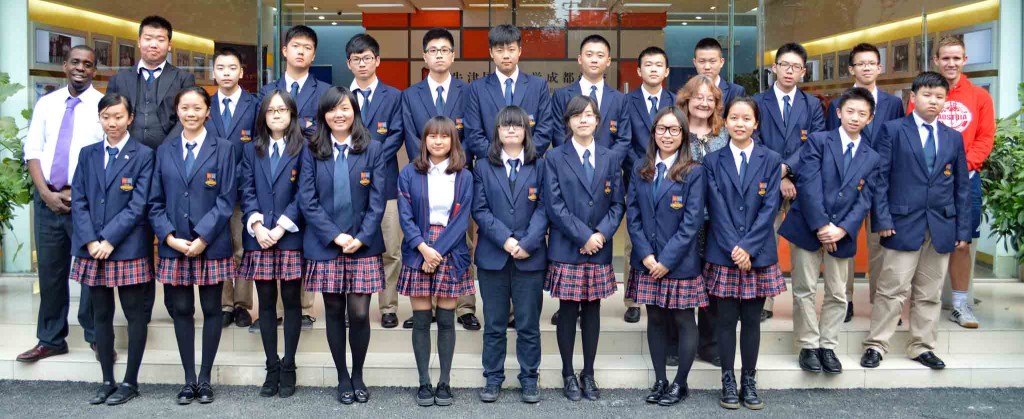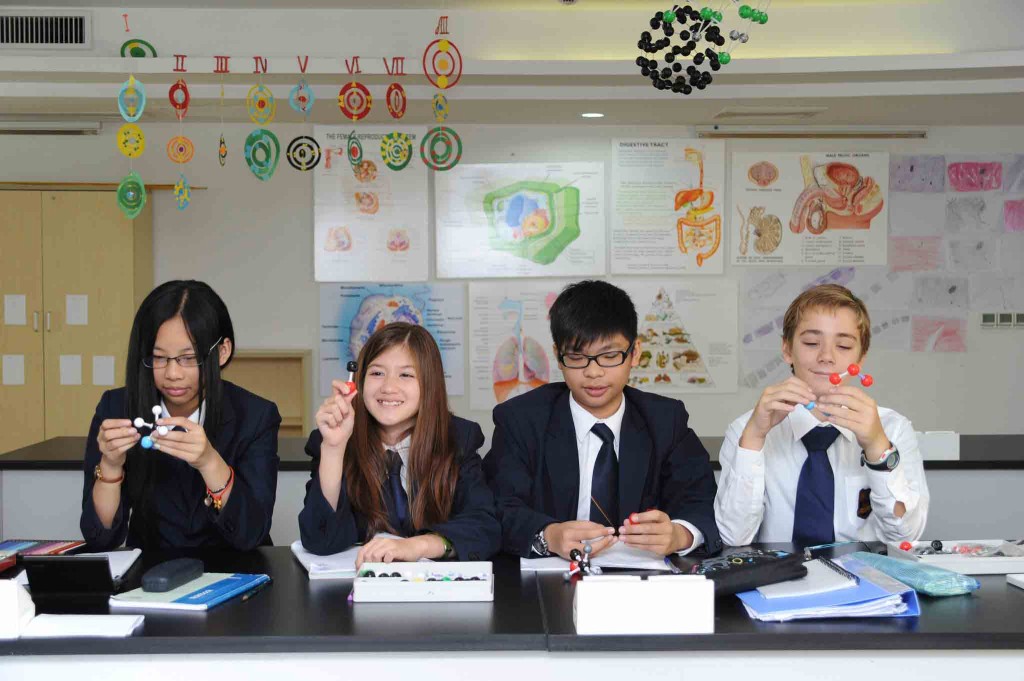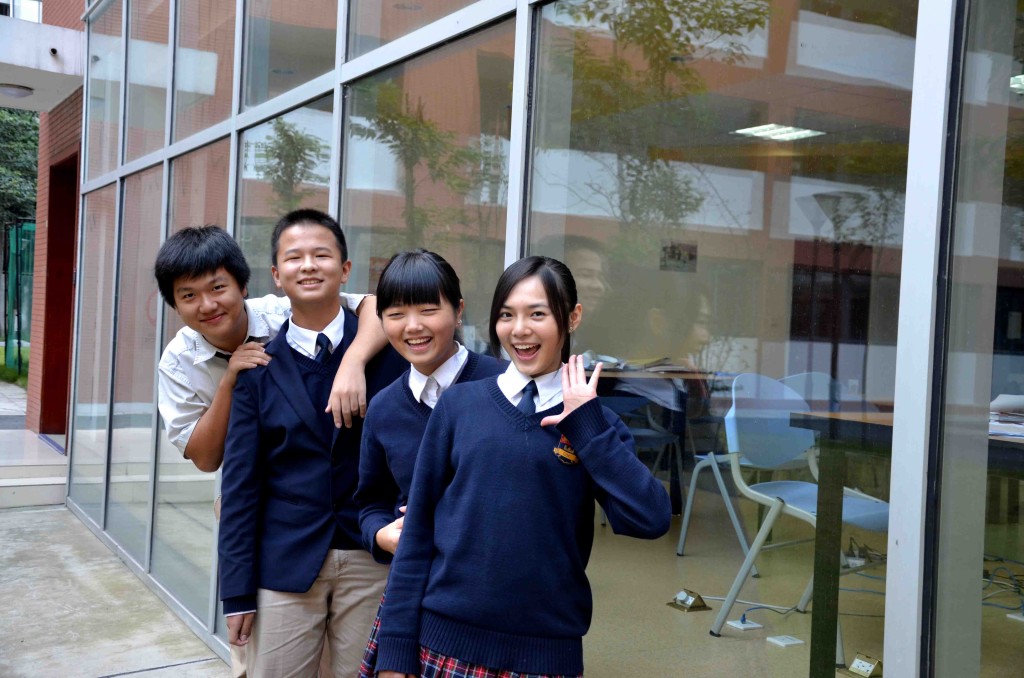 In the several decades since China’s opening and reform in the late 1970s, China’s education system has evolved in an unprecedented manner. Buffeted by unstable political and economic environments, China has overcome massive challenges to produce an education system that has put hundreds of millions of children through school, raising education levels across the board and simultaneously helping to lift more than 500 million people out of poverty over the last 30 years. Patrick Hoey, Chief Operating Officer of BE Education, says that China’s next challenge is producing a talent pool that can fully contribute in the new era of innovation.
In the several decades since China’s opening and reform in the late 1970s, China’s education system has evolved in an unprecedented manner. Buffeted by unstable political and economic environments, China has overcome massive challenges to produce an education system that has put hundreds of millions of children through school, raising education levels across the board and simultaneously helping to lift more than 500 million people out of poverty over the last 30 years. Patrick Hoey, Chief Operating Officer of BE Education, says that China’s next challenge is producing a talent pool that can fully contribute in the new era of innovation.
China’s students are excelling in classrooms at home and abroad; however, as China focuses on rebalancing its economy towards domestic consumption and innovation, the pressure for education reform is growing. China’s education system must overcome structural issues that produce a large labour pool but a small talent pool. Private sector schools are increasingly providing an opportunity for experimentation and integration of Chinese and international curriculum methodologies to drive this reform.
China’s rapid economic development and modernisation has been accompanied by equally impressive progress in promoting universal education and gains in literacy and numeracy. In 1949 only 4.8 per cent of school-aged children were enrolled in school; by 2009, enrolment in compulsory grades 1-9 reached 91 per cent and high school enrolment reached 79 per cent. As the population of students surged from four million in 1949 to more than 200 million in 2009, a system of high school and university Zhongkao and Gaokao entrance exams were put in place to allocate scarce places in high schools and universities to top performing students on a merit basis. However, as competition for places in high schools and universities increased, academic methodology in middle schools and high schools changed to favour test preparation. Over the years this trend has continued to grow, creating the current academic imbalance that overwhelmingly emphasises test preparation in place of critical thinking and problem solving.
 The concern is that intensive test-based education churns out graduates who are good students but poor thinkers, effectively producing graduates who are unequipped to deal with the types of challenges faced in a modern economy.
The concern is that intensive test-based education churns out graduates who are good students but poor thinkers, effectively producing graduates who are unequipped to deal with the types of challenges faced in a modern economy.
This year, a record 7.3 million graduates will enter the job market, but many will be unable to fill positions that require critical thinking and problem solving skills. Over a third of Chinese firms said they struggled to find workers with employable skills last year. Such a small talent pool drives up the cost of operations for companies who must spend years investing in and training unqualified employees. A 2013 survey from the European Chamber of Commerce in China indicated the main problem in recruiting Chinese staff was unrealistically high hiring expectations versus low skill sets.
This has resulted in the gradual opening of a private education sector, providing alternatives to the state system. The majority of schools in China are public schools that admit Chinese nationals and strictly follow the China national curriculum. Three additional types of schools are growing in popularity: private schools, which enrol Chinese and expatriate students and are allowed to integrate international curriculum components into a third of their timetable; Sino-foreign, joint-venture schools, which accept Chinese and expatriate students and are permitted to fully integrate international and China curricula; and international schools, which only take foreign passport holders and typically use a full international curriculum programme.
The popularity of these alternative schools is leading to a gradual internationalisation of the Chinese curriculum, combining the rigour and structure of the Chinese system with the creativity and freedom of the Western system. The growth of non-public schools has brought in teaching methodologies which emphasise classroom interaction, critical thinking, discussion-based learning and English practice, and allows students to voice opinions, ask questions and engage in debate. A greater variety of cross-curricular and creative classes in arts and world perspectives engages students on a deeper level, while greater emphasis on sports teaches leadership and teamwork. All of these methodologies are orientated towards developing students into global citizens, building 21st century skill sets of independence and innovation and making students far more marketable to international companies.
 What does this shift mean for the future? The internationalising of school curriculum programmes will result in the slow creation of a wider talent pool of workers, making domestic Chinese graduates more competitive against their international peers. The ability to invest in skilled, broad-thinking, English-speaking graduates who are comfortable in international settings saves time, energy and training resources. This is a critical advantage for Chinese and European employers as China transitions from a manufacturing to an innovation economy, with increasing numbers of international businesses searching for skilled talent.
What does this shift mean for the future? The internationalising of school curriculum programmes will result in the slow creation of a wider talent pool of workers, making domestic Chinese graduates more competitive against their international peers. The ability to invest in skilled, broad-thinking, English-speaking graduates who are comfortable in international settings saves time, energy and training resources. This is a critical advantage for Chinese and European employers as China transitions from a manufacturing to an innovation economy, with increasing numbers of international businesses searching for skilled talent.
Of course, challenges remain. There are more than 300 million children under the age of 18 in China, with a school system that enrols more students than the populations of most countries. Such a vast system creates a large amount of inertia and changes will come slowly. China’s Zhongkao and Gaokao force schools to focus their teaching time on test preparation and limit their ability to develop a wider, internationalised curriculum. Families face a difficult decision in keeping their children in a school that prepares students for the Gaokao and entrance to a Chinese university, or placing them in an alternative school that does not provide Gaokao preparation. Without a successful Gaokao score students have a limited opportunity to attend university in China and must apply to universities abroad.
Regardless of the difficulties, non-public schools are attempting to integrate experimental programmes into their curriculum. Schools are delivering the Chinese curriculum using more international methods, such as using immersive English to teach classes like PE and art. In this way schools are able to build English and other skills throughout secondary school years while maintaining students’ Chinese identity.
China’s National Plan for Medium and Long-term Education Reform and Development (2010–2020) highlights areas for reforming the test-based system. More freedom will be given to institutions of higher education in determining admissions criteria, with the goal of changing the habits of high schools by forcing them to prepare students for a wider range of university selection criteria beyond the Gaokao. Admissions criteria for two-year colleges, vocational schools and approval authority for Sino-foreign joint venture schools and international schools are being delegated to provincial-level Education Bureaus by the Ministry of Education in order to create a more open environment for experimentation.
 As greater numbers of Chinese, European and international businesses in China demand workers with 21st century skills that emphasise critical thinking, problem solving and creativity, pressure to reform the test-based education system will grow. The growth of internationalised curricula and alternative curriculum schools will help transition the education system from producing a large labour pool to a large talent pool, helping to drive China’s next round of economic development and strengthening the ties between Chinese and European businesses in the process.
As greater numbers of Chinese, European and international businesses in China demand workers with 21st century skills that emphasise critical thinking, problem solving and creativity, pressure to reform the test-based education system will grow. The growth of internationalised curricula and alternative curriculum schools will help transition the education system from producing a large labour pool to a large talent pool, helping to drive China’s next round of economic development and strengthening the ties between Chinese and European businesses in the process.
BE Education is a leading professional provider of international education services in China. BE Education offers students a full range of top-quality services, including overseas education consulting, summer programmes at prestigious overseas schools, one-to-one tutoring, and international schools with partner Oxford International College, with campuses located in Chengdu, Changzhou, and Zhengzhou. The 2010–2014 winner of China’s Hurun Report’s Best of the Best Award for Best Education Service Provider, BE Education develops in its students the academic and life skills they need to access the world’s best education and succeed beyond the classroom.


Recent Comments